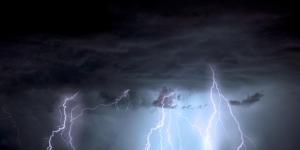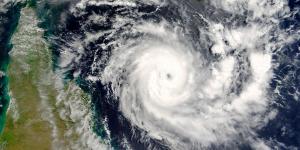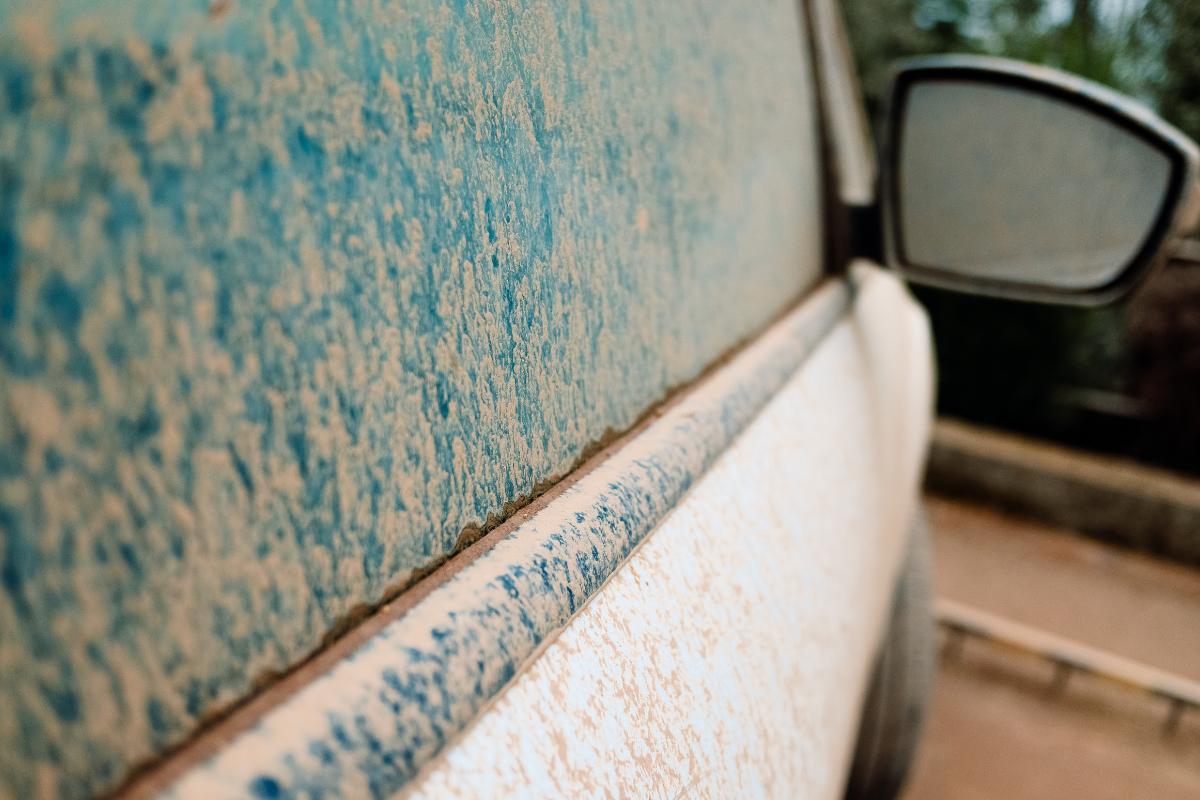What Is Mud Rain? - Causes of Rain Dust


Mud rain is a meteorological phenomenon associated with arid and semi-arid conditions. Also known as rain dust, it manifests due to the interaction between soil dryness, lack of vegetation and dust storms. It is generally more prevalent during spring and summer, depending on the regions. The presence of dust particles suspended in the atmosphere, transported by characteristic winds, contributes to the formation of this meteorological event.
In this thedailyECO article, we ask what is mud rain? We discover the causes of rain dust and the impact it has on various environments.
What is mud rain?
Mud rain is a meteorological phenomenon that occurs when rain carries particles of dust and dirt suspended in the atmosphere. This is due to the dust particles mixing with water droplets. This peculiar meteorological event usually occurs in arid or semi-arid regions. This is because the climatic conditions facilitate the suspension of fine particles in the air.
Mud rain has several causes, one of the main ones being the dryness of the soil in areas with little vegetation. In these areas, the lack of vegetation cover exposes the soil to wind erosion. Exposed soil means the wind can easily pick up dust and sand particles. When rain comes, these particles are dragged down by water droplets, resulting in mud rain, also known as rain dust.
Another factor that contributes to this phenomenon is the presence of dust storms or sandstorms. Especially in regions prone to drought and strong winds, dust storms can raise large amounts of fine particles into the atmosphere. When these storms coincide with rain, the particles mix with water droplets and fall to the ground, creating the characteristic mud rain.
Rain dust not only has meteorological implications, but can also affect air quality and visibility. Airborne particles can have impacts on human health, especially people with respiratory problems. Additionally, the presence of mud rain can cause infrastructure problems, such as blockages in water filtration systems and damage to sensitive electronic equipment.
Mud rain is also often responsible for something known as ‘blood rain’. This is a phenomena whereby red-colored rain falls from the sky, making it appear as if the rain were blood. This occurs when the dust that is picked up is of a reddish color, mixing with the water droplets to appear as blood rain. The red color is often from a high-iron content, making it essentially rust.
Learn about how soil is structured with our article on the horizon layers of soil.

Why does mud rain occur?
Now we know what mud rain is and how it is formed, we can look at the underlying reasons why it occurs. Rain dust has various causes related to climatic and geographical factors. One of the fundamental reasons is the lack of vegetation and the dryness of the soil in arid or semi-arid regions. In these areas, the lack of rainfall and the absence of adequate vegetation cover facilitate wind erosion. Winds can lift dry soil particles and dust, transporting them to great heights in the atmosphere.
When rain finally occurs, these suspended particles mix with water droplets and descend to the surface, giving rise to mud rain. This process is more likely under windy conditions, where particles can be transported significant distances before being deposited by rain.
Another important factor is the presence of dust storms. These sandstorms are atmospheric events characterized by strong winds that raise large amounts of dust and sand particles. In some regions, dust storms are common events, especially in areas with dry and exposed soils. When they coincide with a rain event, suspended particles can be dragged to the ground along with water droplets, contributing to mud rain.

What are the effects of mud rain?
The impact of mud rain on different environments can vary:
- Agriculture: mud rain can deposit fine particles on crops, affecting plant health. The particles may carry pollutants or pathogens that can harm crops.
- Water bodies: the sediment carried by mud rain may contribute to the turbidity of water bodies, affecting aquatic ecosystems. Excessive sedimentation can harm aquatic plants and animals.
- Human health: depending on the source of the suspended particles, mud rain may contain pollutants or allergens that can have health implications if inhaled or come into contact with the skin.
- Infrastructure: mud rain can contribute to the accumulation of sediment on roads and other surfaces, impacting transportation and infrastructure.
- Ecosystems: the introduction of foreign particles to natural ecosystems can disrupt the balance and function of ecosystems. Some microorganisms carried by mud rain may have ecological consequences.
Whether mud rain is dangerous depends on the nature of the particles it carries. In some cases, it may be a natural phenomenon without significant harm, while in others, it could pose risks to the environment and human health. Monitoring and studying mud rain events help scientists understand their causes and potential impacts.
When is mud rain most common?
The frequency of mud rain is closely related to seasonal weather conditions. This phenomenon is more common during the warmest and driest months of the year, typically during spring and summer. Although mud rain is more common in spring and summer, it is not exclusive to these months. It can occur in other seasons of the year, especially if particular weather conditions occur, such as unusual dust storms or exceptional weather patterns.

How to remove mud rain
Mud rain can cause inconvenience in everyday life, as it can leave residue on vehicles, buildings and other surfaces. To clean vehicles, it is important to wash with a pressure washer as soon as possible so that it does not become embedded in the car's paint. You can also use a mild soap and sponge to gently wash the affected areas. Avoid rubbing too hard, as this could cause scratches in the paint.
For buildings, sidewalks and other exterior surfaces, power washing can also be effective in removing mud. In some heavier cases, it may be necessary to use specialized cleaning products to remove stubborn impaction.
The best thing to remove mud from rain is prevention. Protective waxes or sealants can be applied to the paint of vehicles to help prevent mud from adhering as easily. This makes it easier to clean later. This is a preventive measure which is more common in areas with regular episodes of mud rain or rain dust. You will need to keep erosion-prone areas of your property under control and clean any buildup of dirt before it becomes a problem.
Learn more about rain phenomena with our article on what is a torrential downpour?

If you want to read similar articles to What Is Mud Rain? - Causes of Rain Dust, we recommend you visit our Meteorological phenomena category.








